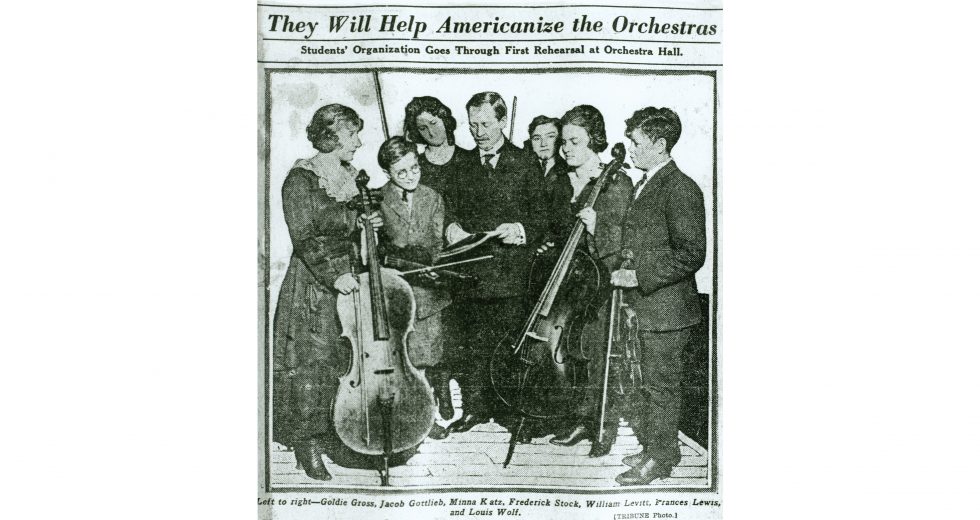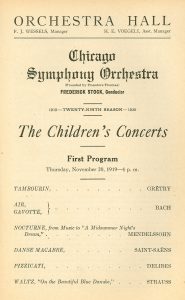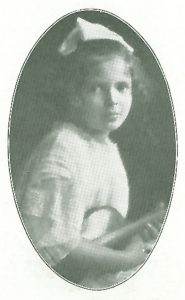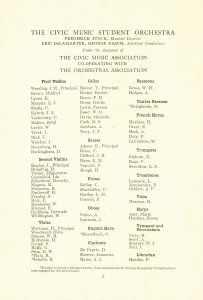
During the 1919–20 season, music director Frederick Stock inaugurated three major initiatives to cultivate future generations of musicians and concertgoers: a regular series of Children’s Concerts, Youth Auditions, and the Civic Music Student Orchestra.
On November 20, 1919, Stock led the first of a regular series of Children’s Concerts specifically designed to introduce young Chicagoans to music. After hearing several auditions from promising young instrumentalists, Stock chose eight-year-old Anita Malkin to become the first youth soloist on a Children’s Concert; she performed the first movement of Rode’s Violin Concerto with the Orchestra on February 12, 1920.
The initial goal of the Civic Music Student Orchestra was threefold: “To give an opportunity to capable players to acquire orchestral routine and experience, fitting themselves for positions in the symphony orchestras of the country; to reduce the
dependence of this country upon European sources of supply for trained orchestral musicians; and to take orchestral concerts to outlying districts where people, because of their remoteness, are denied the privilege of hearing good music.”
The ensemble made its debut on March 29, 1920, and the roster included several future Chicago Symphony Orchestra members (including concertmaster John Weicher). Frederick Stock, Eric DeLamarter, and George Dasch shared conducting duties, leading Halvorsen’s Triumphal Entry of the Boyards, Godard’s Adagio pathétique, Tchaikovsky’s Fifth Symphony, Grieg’s Suite no. 1 from Peer Gynt, Keller’s Souvenir and Valse, and one of Elgar’s Pomp and Circumstance marches.
In the Chicago Tribune, William Lines Hubbard reported, “And O, the youthful enthusiasm and ‘pop’ of it all! The whole room tingled with the vigor and impulse of youth and the audience feeling it grew glad and radiant. At the close of the first half of the program, Mr. Wessling, the concertmaster, presented a baton to Mr. Stock with expression of the players’ thanks for all he had done, and he in return voiced his admiration for the devotion the young people had shown and his appreciation of the wonderful worth of the material Chicago had furnished. . . . Stock used his new baton for the Elgar march, which closed the concert.”
Image above: Chicago Tribune, January 20, 1920
This article also appears here.


